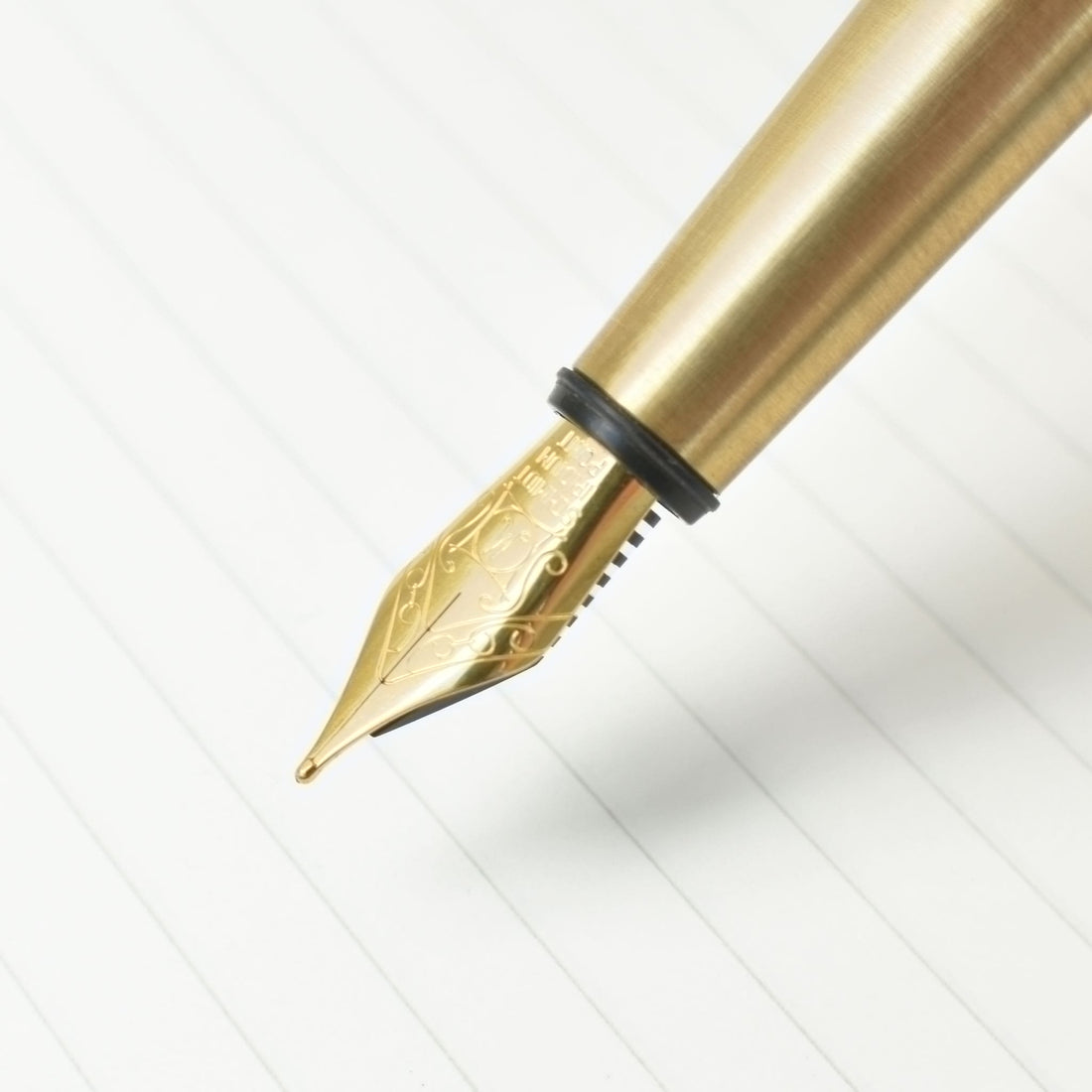Why Is It Important to Care for Your Fountain Pens?
Fountain pens are not just writing tools; they are refined instruments that embody craftsmanship, functionality, and personal expression. Whether you own one as part of a curated collection or as a treasured daily writer, proper care is essential to preserve the performance and aesthetics of your fountain pen. From ensuring smooth ink flow to preventing damage or corrosion, maintenance plays a vital role in longevity. In this guide, we share the best practices to care for your fountain pen and keep it in optimal condition for years to come.
1. Clean Your Fountain Pen Regularly
Routine cleaning is arguably the most important step in maintaining your fountain pen. Over time, dried ink, dust, and paper fibers can accumulate inside the feed or nib, affecting the smoothness and consistency of the ink flow.
To clean your Method Fountain Pen:
-
Disassemble the pen, including the nib, feed, and ink converter.
-
Rinse each component with lukewarm water until the water runs clear. Avoid using hot water or soap, which can damage internal components.
-
Use a bulb syringe for deeper cleaning if needed.
-
Gently wipe all parts with a soft, lint-free cloth and let them air dry completely before reassembling.
For best results, clean your pen every 4–8 weeks depending on usage and ink type.
2. Respect the Material of Your Fountain Pen
Method Fountain Pens come in various finishes, each with unique properties and care requirements:
-
Stainless Steel: This resilient and corrosion-resistant material is ideal for daily use. Occasionally wipe the surface with a damp cloth to remove fingerprints or grime.
-
Brass: Brass ages naturally and develops a rich, golden patina over time. Some users enjoy this evolving aesthetic, while others prefer the polished original look. To restore the brass’s sheen, simply polish the surface with a soft cloth and a small amount of brass cleaner.
-
Anodised Aluminium: Some Method Fountain Pens also feature anodised aluminium, which offers a sleek, modern appearance. Clean it with a damp cloth; avoid abrasives that could scratch the finish.
Understanding the materials of your pen helps ensure it stays beautiful and functional over time.
3. Use High-Quality, Fountain Pen-Safe Ink
Ink quality is crucial to your pen’s performance. Always choose inks specifically formulated for fountain pens. These are generally water-based and offer a balance between flow, saturation, and drying time.
Avoid using:
-
India ink
-
Calligraphy ink
-
Any pigment- or shellac-based ink
These can clog the feed, damage the nib, and are difficult to clean out. Many premium ink brands also offer a variety of colours and properties—such as water resistance or quick-drying formulas—that can enhance your writing experience.
4. Store Your Fountain Pen Properly
How you store your fountain pen impacts both its physical condition and ink performance:
-
Upright (nib up): Helps prevent ink leakage and protects the nib.
-
Horizontally: Ideal for ready-to-use pens as it keeps ink near the nib without pooling excessively.
-
Avoid nib-down storage: This can cause ink to flood the feed or nib, leading to leaks or hard starts.
Also, store pens away from direct sunlight, extreme temperatures, and high humidity, all of which can deteriorate materials or evaporate ink prematurely.
5. Avoid Excessive Pressure When Writing
A hallmark of the fountain pen is its fluid, low-pressure writing style. Pressing too hard can cause damage to the nib, disrupt the tines, or hinder ink flow.
Tips for smooth writing:
-
Let the nib glide naturally across the paper.
-
Hold the pen at a 40–55° angle.
-
Allow the weight of the pen to do the work.
If your pen isn’t writing smoothly, it’s more likely due to dried ink or misalignment than a need to press harder.
6. Use Your Fountain Pen Frequently
Fountain pens are built to be used. In fact, the more you write with them, the better they perform over time. If left unused, ink can dry out inside the feed, resulting in clogs or hard starts.
To keep your pen in ready condition:
-
Use it at least once a week.
-
If storing for extended periods, clean and empty the ink reservoir first.
Some owners even keep multiple fountain pens in rotation to allow for different inks, nibs, or writing styles.
7. Invest in Accessories That Protect
Consider purchasing cases, stands, or sleeves designed for fountain pens. A good pen case can protect the nib and body from scratches or dents during travel. Desk stands help store your pen horizontally and add a touch of elegance to your writing space.
Additionally, keeping a blotter or quality paper on hand ensures a better writing experience and minimises ink feathering or bleed-through.
Conclusion
Caring for your fountain pen is not only about maintenance—it’s about appreciation. These instruments are designed to be treasured for a lifetime of use. With just a little effort, you can ensure your Method Fountain Pens remains in optimum condition for years of thoughtful writing.
Explore our curated collection of fountain pens to find your next writing companion, and don’t hesitate to reach out for care tips or product recommendations.

